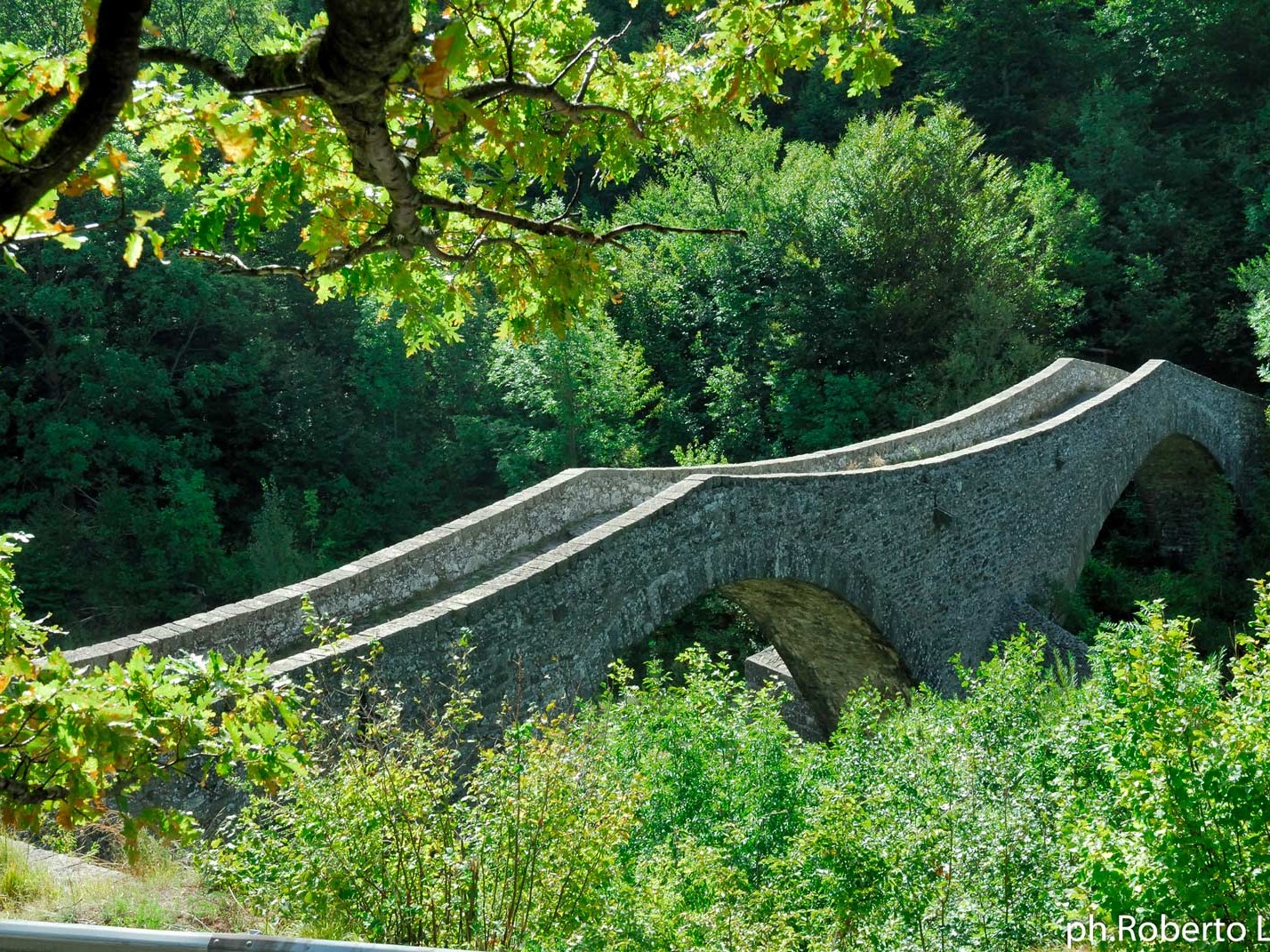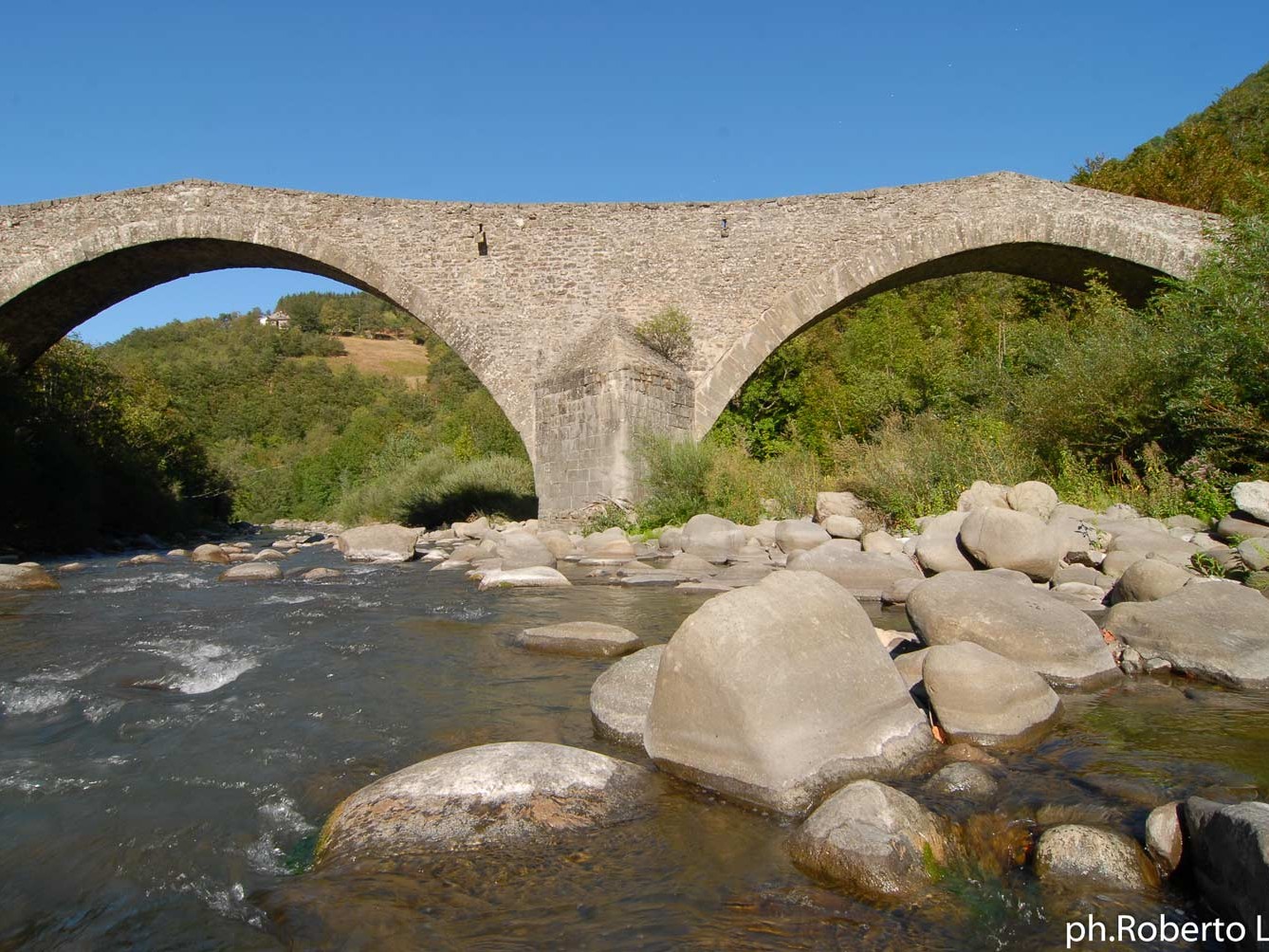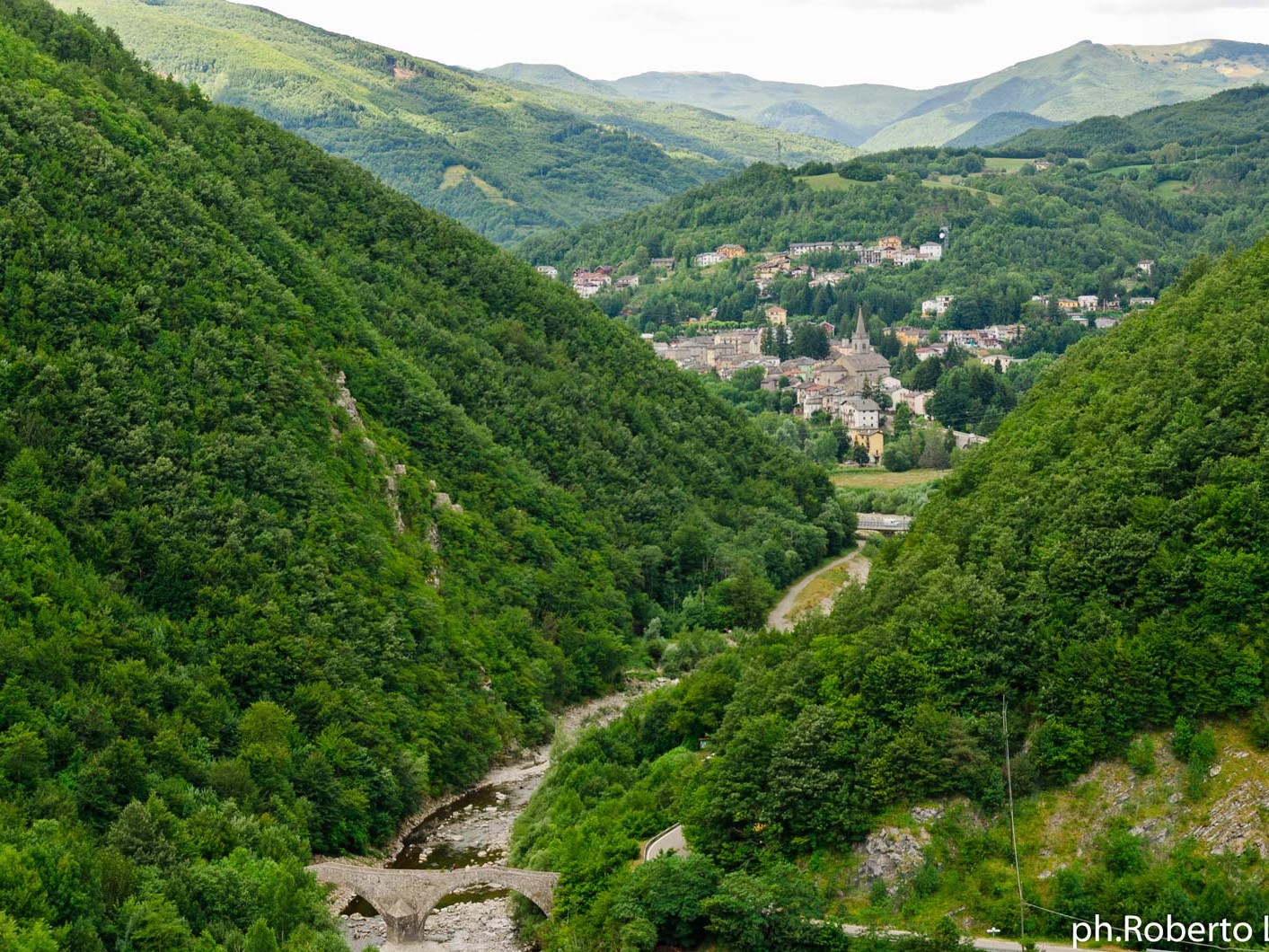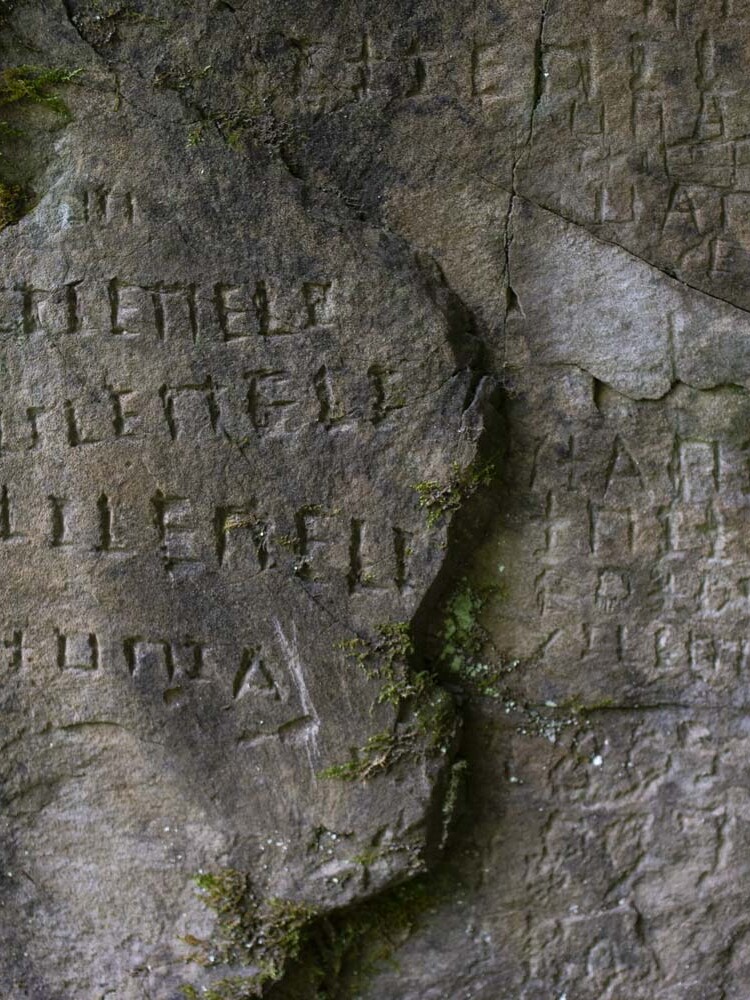Fola Bridge in Pievepelago is of considerable artistic and historical interest.
One of the bridges that cross the river Scoltenna stream, just a short distance from Pievepelago.
It is perhaps one of the best-known bridges in the area, and certainly one which is difficult to forget, thanks to its beautiful shape.
It is situated just one kilometre from the town of Pievepelago, and it is possible to park your car nearby. There are also several trails, and a beautiful walk leading to the town from here.
.
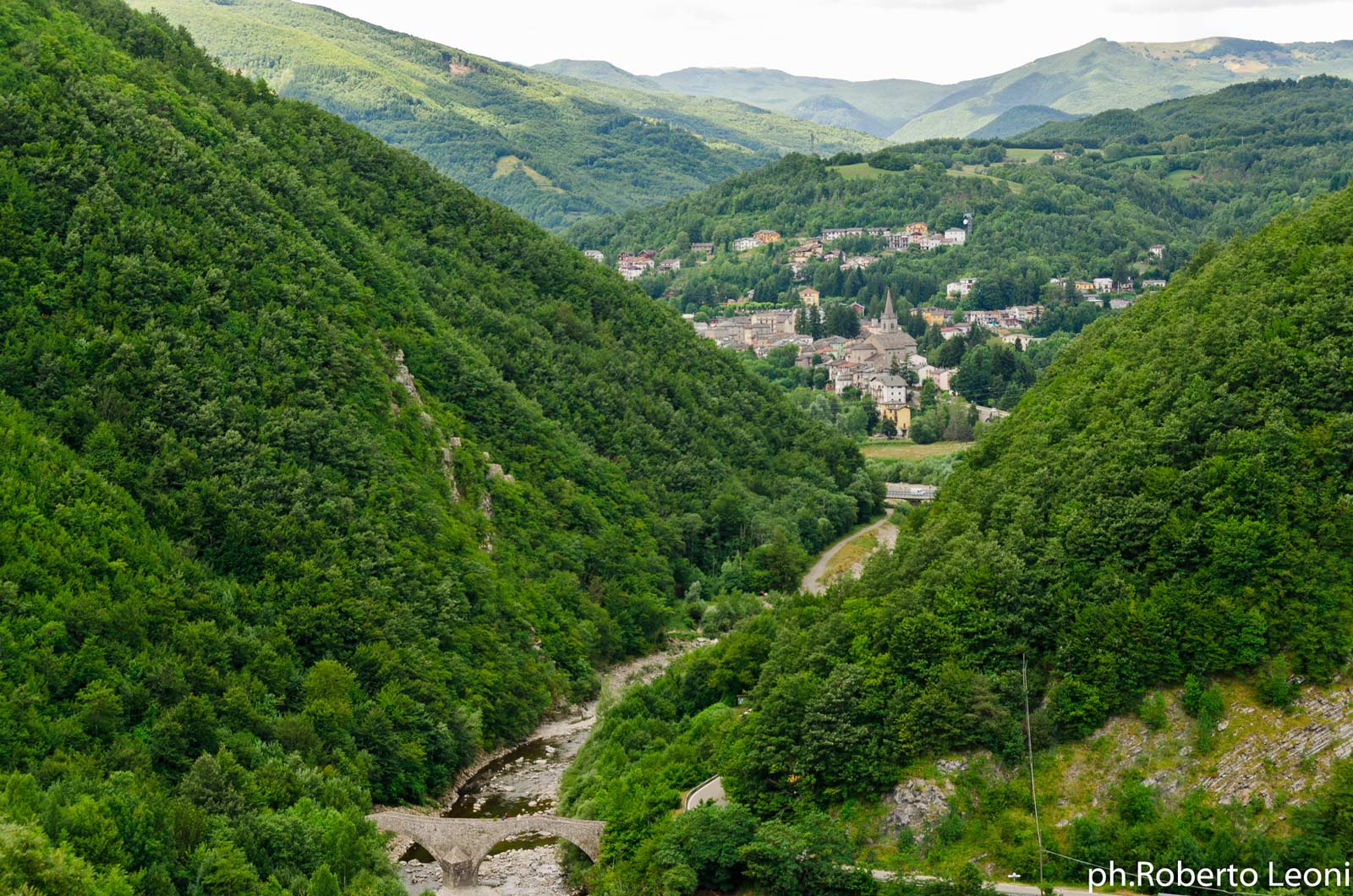
The location
It is located on the border between Groppo, an outlying hamlet of Riolunato, and Pievepelago, and crosses the river Scoltenna where the Pievepelago valley narrows into the deep ravine which for centuries formed a barrier to communication, as it was once only possible to cross the river by means of the Strettara Bridge (in the municipality of Montecreto).
History
In past times, crossing rivers presented a real danger, and for this reason crossing points and fords were guarded by holy shrines and crosses, placed to protect the traveller who attempted to cross. But the part of the Apennine chain belonging to Modena has always played a crucial role in communications between the area of the Po Valley and Tuscany, especially the area around Lucca and the Pistoia plain: one of the most important roads linking Tuscany to Pelago in the Middle Ages was the one which led from Pistoia across the Abetone Pass, passing by Fiumalbo, continuing to Riolunato and along the river Scoltenna, across this very bridge.
Although of Romanesque origins, the construction of the present-day bridge dates back to the 18th century.
Name
There are different theories as to the origins of its name.
Some believe it to be a placename of Longobard origin, while other sources put forward the theory that it may simply refer to ‘fola’, meaning a fairy-tale or fable, referring to the fanciful stories that shepherds would tell about the dangers and mysteries surrounding the bridge.
The bridge is quite unusual due to its ‘humpback’ shape and for being the only stone bridge with two arches in the whole region of Emilia!
The text comes from the noticeboard which stands at the site, provided by the organisation Central Emilia National Park.



